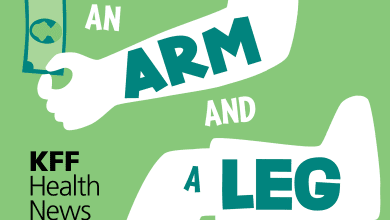Guide to Healthcare Reimbursement Models
Understanding the different healthcare reimbursement models is key for businesses aiming to offer valuable health benefits while effectively managing costs. There are a range of options available, each with its own unique advantages and challenges, so businesses need to fully understand these models to make informed decisions.
This guide dives into various models, from traditional insurance plans to innovative arrangements like Health Reimbursement Arrangements (HRAs) and Health Savings Accounts (HSAs), to help businesses find the most fitting approach to healthcare benefits, ensuring compliance and employee satisfaction with the chosen healthcare reimbursement model.
Introduction to Healthcare Reimbursement Models
The landscape of healthcare financing is ever-evolving, with businesses constantly seeking innovative ways to manage healthcare benefits for their employees. Amidst this evolution, healthcare reimbursement models have emerged as a cornerstone strategy, offering flexibility and efficiency in administering health benefits. These models not only represent a shift from traditional insurance plans but also highlight a growing trend towards personalized and cost-effective healthcare solutions.
The significance of these healthcare reimbursement models lies in their ability to adapt to the changing needs of both employers and employees, making an understanding of their mechanisms and advantages imperative for any business.
The Evolution of Employee Health Benefits
Employee health benefits have evolved over time to reflect the changing workforce, technological advancements, and regulatory changes. Initially, employee health benefits were limited to traditional group health insurance offered by employers, leaving little room for maneuvering or customization. This model provided a one-size-fits-all solution, which, while beneficial, lacked the flexibility to cater to the diverse needs of employees.
As the workforce became more diverse and the costs associated with healthcare continued to rise, the need for more adaptable and cost-effective solutions became apparent.
This led to the exploration and adoption of various healthcare reimbursement models, each designed to offer greater control to both employers and employees over healthcare spending and benefits.
This evolution reflects a broader trend towards personalization and efficiency in employee health benefits, driven by a desire to provide meaningful and sustainable healthcare solutions.
Why Reimbursement Models are Gaining Popularity
The shift towards healthcare reimbursement models is intentional. These models are gaining popularity for several compelling reasons. Firstly, they offer businesses, especially small and medium-sized enterprises, more control over costs while still providing valuable health benefits to their employees. By reimbursing employees for healthcare expenses, companies can avoid the high premiums and one-size-fits-all approach of traditional group health insurance plans.
Secondly, reimbursement models empower employees by giving them the freedom to choose the health insurance plans that best suit their individual or family needs. This personalization enhances the value of the health benefit, potentially leading to higher employee satisfaction and retention.
Lastly, with the advancements in regulatory frameworks, such as the introduction of Individual Coverage HRAs (ICHRAs) and Qualified Small Employer HRAs (QSEHRAs), businesses now have the opportunity to offer health benefits in a compliant manner, without the administrative burden and financial strain associated with traditional health insurance.
The adoption of healthcare reimbursement models signifies a paradigm shift in how businesses approach employee health benefits. This transition not only aligns with the evolving needs of the workforce but also underscores a commitment to fostering a healthier, more satisfied, and productive workforce.
Overview of Common Healthcare Reimbursement Models
As businesses navigate the complex world of employee health benefits, understanding the nuances of various healthcare reimbursement models is crucial. These models provide a framework for employers to offer health benefits in a way that is both cost-effective and compliant with regulatory standards.
Health Reimbursement Arrangements (HRAs)
HRAs are employer-funded plans that reimburse employees for medical expenses and, in some cases, insurance premiums. These arrangements are highly flexible, allowing employers to set their own budgets while offering employees the freedom to choose healthcare services and coverage that best meet their needs. Here are the two primary types of HRAs:
Individual Coverage HRA (ICHRA)
ICHRAs allow employers to reimburse employees for the cost of health insurance purchased on the individual market. This model is appealing for its flexibility and the ability to offer benefits tailored to the diverse needs of a workforce.
Qualified Small Employer HRA (QSEHRA)
Designed for small businesses with fewer than 50 full-time employees, QSEHRAs offer a way for small employers to reimburse employees for healthcare expenses without offering a traditional group health plan. Contribution limits and eligibility requirements are defined by legislation, making it a regulated and predictable option for small businesses.
Health Savings Accounts (HSAs)
HSAs are tax-advantaged accounts that individuals can use to save for medical expenses, available to those enrolled in high-deductible health plans (HDHPs). Contributions are made with pre-tax dollars, and funds can be used for a wide range of healthcare expenses. HSAs offer significant tax benefits and the potential for savings to grow over time.
Flexible Spending Accounts (FSAs)
FSAs allow employees to set aside pre-tax dollars for out-of-pocket healthcare expenses. Unlike HSAs, FSAs are owned by the employer, and contributions are made through salary reductions. FSAs typically operate on a use-it-or-lose-it basis, where unspent funds at the end of the plan year are forfeited.
Each of these healthcare reimbursement models offers distinct advantages and limitations, making it essential for businesses to carefully consider their specific needs, workforce composition, and financial capabilities when choosing the right approach.
Comparing ICHRA and QSEHRA
When delving into the specifics of Health Reimbursement Arrangements (HRAs), two models stand out for their unique attributes and applicability to different business scenarios: the Individual Coverage Health Reimbursement Arrangement (ICHRA) and the Qualified Small Employer Health Reimbursement Arrangement (QSEHRA). Understanding the differences between these two can help businesses make informed decisions about which model best suits their needs and the needs of their employees.
Eligibility Requirements
ICHRA: There are no size limitations for businesses offering ICHRAs, making them accessible to both small and large employers. Employees must be enrolled in health insurance coverage that meets Affordable Care Act (ACA) requirements to participate.
QSEHRA: Specifically designed for small businesses, QSEHRAs are available to employers with fewer than 50 full-time employees who do not offer a group health plan. All employees are eligible, but the employer can set certain criteria based on full-time status or other factors.
Contribution Limits
ICHRA: One of the advantages of ICHRAs is that there are no set contribution limits, allowing employers the flexibility to define their own reimbursement caps.
QSEHRA: For 2024, the contribution limits for QSEHRAs are set at $6,150 for individual coverage and $12,450 for family coverage. These limits are adjusted annually for inflation.
Pros and Cons for Employers and Employees
ICHRA:
- Pros: Flexible contribution limits; available to businesses of any size; allows employees to choose coverage that best fits their needs.
- Cons: Requires employees to purchase their own health insurance, which may be a downside for those preferring a group plan.
QSEHRA:
- Pros: Offers small businesses a way to provide health benefits without the need for a traditional group health plan; simple and predictable with set contribution limits.
- Cons: Limited to smaller businesses; annual contribution caps may not cover all healthcare expenses.
Both ICHRA and QSEHRA offer valuable alternatives to traditional health insurance by providing flexibility and personalization in health benefits. The choice between them depends on various factors, including the size of the business, the desired level of flexibility in contributions, and the specific needs and preferences of the employees.
How to Choose the Right Model for Your Business
Deciding on the best healthcare reimbursement model for your business involves several considerations. By carefully assessing your business size, regulatory compliance, and employee health needs and preferences, you can make a choice that not only meets legal requirements but also enhances employee satisfaction and retention. Here’s how to approach this decision-making process.
Assessing Your Business Size and Needs
Start by evaluating the size of your business and your financial capability to support health benefits. Small businesses with tighter budgets may find QSEHRAs more manageable due to their contribution limits and simpler administrative requirements. Larger organizations might prefer the flexibility of ICHRAs, which can be tailored to fit a diverse workforce with varying health insurance needs.
Understanding Regulatory Compliance
Navigating the complex landscape of health benefit regulations is crucial. Ensure that the model you choose complies with current health care laws, including the Affordable Care Act (ACA) and other relevant state and federal regulations. Consulting with a legal expert or a benefits advisor can provide clarity and prevent potential compliance issues. HRA administrators like Take Command offer this service as part of our partnership with you.
Evaluating Employee Health Needs and Preferences
Understanding your employees’ healthcare needs and preferences is essential. Consider conducting surveys or meetings to gather insights into what your employees value in their health benefits. Some may prioritize the freedom to choose their own healthcare providers, while others might appreciate the simplicity and predictability of a QSEHRA.
Implementing Your Chosen Healthcare Reimbursement Model
Once you’ve selected the right healthcare reimbursement model for your business, the next step is implementation. This involves setting up the arrangement, communicating with employees about the new benefits, and managing enrollment. Success in this stage relies on clear communication and a smooth transition process.
Steps for Setting Up ICHRA or QSEHRA
- Determine the budget: Decide how much your business can afford to contribute towards employee health benefits.
- Define the eligibility criteria: Specify which employees are eligible and if any groups are excluded.
- Choose a plan administrator: Whether it’s an in-house team or an external provider, select who will manage the HRA.
- Prepare plan documents: Draft legal documents outlining the plan details, including benefits, eligibility, and reimbursement procedures.
Best Practices for Communication and Enrollment
Educate employees: Provide clear information about how the new reimbursement model works, its benefits, and how they can make the most of it.
- Offer support: Make resources available for employees to ask questions and receive assistance during the transition.
- Ensure seamless enrollment: Simplify the enrollment process as much as possible to encourage participation.
By thoughtfully choosing and implementing a healthcare reimbursement model, businesses can provide meaningful health benefits that meet the needs of their workforce while managing costs effectively. This strategic approach not only supports the well-being of employees but also contributes to the overall success of the business.



